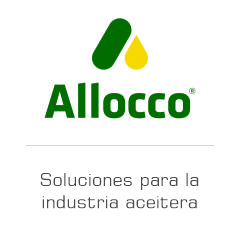Jim Lane/As Argentina’s monetary policies run into big trouble, inflation mounts and the peso sinks, can the biofuels boom keep going?
BUENOS AIRES — Most nights now, you can hear the pots and pans banging along one section or another of Avenida del Libertador, the main boulevard leading north out of the city center, and it is not the sound of government stability; but it may well be the tocsin of freedom.
I last heard them ten years ago this past Christmastime, when the country ran through four presidents in one week and, immediately thereafter, began its decade-long experiment in sovereign debt default and monetary expansion.
The ringing crash of pots and pans in the windows is a traditional form of dissent, which has all of the flair and certainly more rhythm than “I’m mad as hell and I’m not going to take it any more.” Worry is at the heart of it.
On the surface, things are much the same as they were in Argentina. The official exchange rate is running at 4.50 pesos to the dollar, and the official inflation rate is running at 9.90 percent. A report from the Economist pointed to various indicators that the true rate of inflation was running between 20 and 30 percent, and described an extraordinary set of deceptions run by the national government to conceal the true rate.
When Argentines begin to worry, the conversion of pesos to dollars gets a move on, and for sure, there’s a robust black market in pesos, where the exchange rate is running at 5.90 to 1 this week. Even so, dollars are in short supply.
Wages, prices under pressure
Yesterday was a holiday in Buenos Aires, and the restaurants were characteristically packed, though the talk at the tables is more pessimistic and defeatist than usual. A trucker’s strike is on, the CGT labor union that dominates the distribution of cash to ATMs, food, and fuel – seeking a 30 percent jump in wages, and tax relief.
Many are restless at the idea of being caught short of fuel, and the lines at gasoline stations around the city were unusually long. The grumbling of “not being able to make it to the end of the month,” has reached reasonably epic levels among the middle class.
Meanwhile, the President has ordered out the military police throughout the country, to get fuel supplies running, and canceled a planned address at the Rio+20 Summit in Brazil this week, to direct the government’s response to the fuel crisis.
Ironically, one of the government’s major concerns to assure the flow of fuel to the farming sector, where the popularity of the government is touching rock-bottom lows. Farmers have been furious for years over taxes on exports of soy-related products that run as high as 40 percent. But harvest season is ending, and the government needs the export tax income to keep itself afloat.
Farm strikes
The farmers themselves staged a five-day strike that ended a week ago, and riverboat shipping workers staged a 48-hour strike at the same time, seeking longer working hours in order to address the growing gap between prices and incomes.
The one-week nationwide halt to grain sales was intended to protest higher taxes in the key farming province of Buenos Aires. Adding to tensions over the national government’s policy of wheat and corn export limits, growers claim the tax increase will force some of them to sell their fields.
Argentina is the world’s third largest soybean exporter, with a significant portion going to produce biodiesel. Fears continue to mount over whether the strike will resemble the massive farm protests that paralyzed the sector and crippled Argentina’s government four years ago. The sales strike comes as Argentine farmers move into the final stages of soy and corn collection for the 2011/12 crop year.
Indeed, back in 2008, farmers staged a well-publicized protest when taxes on soy-related exports jumped almost 50 percent in one year. At the time, the strikes and protests resulted in widespread shortages of staples like beef and milk.
The political calculation, back in 2008, was that the government could not lose with higher export taxes. If they resulted in a dampening of exports, the resulting surplus would, so the calculus went, cause domestic food prices to fall and relieve inflationary pressures; if the farmers continued to export anyway, counting on a robust international demand for soy oil and soymeal and a fast-devaluing peso to make exports cheap, then the resulting activity would raise revenues for the government.
2010-11 Biofuels production, exports soar
The result has been soaring exports but, with the peso in decline, less to show for all the activity. In 2011, installed biodiesel capacity expanded to 2.5 million tonnes, up from 2010 1.8 million tons. Production in 2010 reached 1.5 million tons through October, up 56.8% on the year, with nearly 77% of the production exported.
The blending mandates
To keep the biodiesel industry growing and reduce diesel import costs, the Argentine government has also been steadily expanding the blending mandates. Back in 2010, the national government increased the biodiesel blending mandate from B5 to B7. At the time, former president of the Argentine Renewable Energies Chamber, Carlos St. James, explained, “Argentina imported about 5 percent of its diesel needs, typically from Venezuela, which has a particularly high sulfur content. The B5 [mandate] eliminates the need to import this diesel.”
Biodiesel investment a-go-go
For sure, companies have been rapidly expanding production.
Cargill announced in 2010 it would invest $113.6 million in a 67 Mgy soy-based biodiesel plant in Santa Fe province, to come online in September 2011. Evonik said it will build a new 60,000 metric ton per year plant to produce catalysts for biodiesel production that should be online by the end of 2012.
Meanwhile, Louis Dreyfus said it would invest $40 million in a 300,000 ton per year biodiesel plant in the town of General Lagos in the Rosario region. And, in mid-2011, Noble Group said it would invest $50 million in a biodiesel plant, the company’s first investment of the kind in the country, located in Santa Fe province.
The same week as Noble announced, Grupo Bolzan said it would invest $8 million in a 16 million gallon per year soybean oil biodiesel facility. In late summer last year, Agrupación de Colaboración San Antonio inaugurated its new biodiesel plant.
By Q2 2011, Argentinean biofuel production averaged 209,486 tons per month during the quarter, up 38 percent from the same period in 2010. Production over the period peaked at 219,000 tons in June, setting a new record, according to Argentina’s el Instituto Nacional de Estadística y Censos (National Institute of Statistics and Censuses).
In November, biodiesel majors Molinos, Oleaginosa Moreno/Glencore and Vicentín joined forces to offer Patagonia Bioenergía a $33 million loan so it may double the production capacity at its Lorenzo, Santa Fé production facility to 500,000 metric tons annually. Together, those companies will also supply Patagonia Bioenergía with feedstock as well as market the fuel produced.
Ethanol investment, too
Last summer, corn ethanol took a jump forward when farmers cooperative Asociacion de Cooperativas Argentinas said it would invest $80 million in an ethanol plant that will process 300,000 metric tons of corn into 125 million liters of ethanol annually. The facility will be located in Villa Maria with production to begin in April 2013. http://www.biofuelsdigest.com/bdigest/2011/06/21/agentine-co-op-to-invest-80m-in-corn-ethanol-plant/
Meanwhile, Bunge said it would jointly invest $201 million with Aceitera General Deheza in a corn-based ethanol plant known as ProMaiz in Cordoba. The facility will produce 140,000 cubic meters of ethanol annually.
This past March, Alimentos del Sur said it would invest $40 million in a new corn and sorghum ethanol distillery in Diamante city in the eastern province of Entre Rios that will produce up to 83 million liters per year. The project will be financed half from the company’s own capital and half from the Bicentenary Fund at a 9.9% fixed annual rate in pesos to be paid in five years.
Trade troubles
Signs began to grow that the country was using fuel as a barter good for foreign trade. Last year, the government agreed to pay for imports of Alfa Romeo cars with biodiesel worth roughly $11 million during 2011, similar to the deal they made with Porsche in March to import cars by exporting wine.
Troubles with Spain
The boom in biodiesel exports, primarily to the EU, began hitting Spanish biodiesel producers hard. The falling peso made Argentine biodiesel tougher for local producers to compete with, who also had to contend with high EU feedstock prices. Last December, we reported that Spanish biofuel producers were under pressure from a combination of over-expansion of the sector and more competitively priced imports from Argentina and Indonesia.
The country’s 105,000 barrels per day biofuel capacity was still far more than demand estimates from Spanish state body IDAE. IDAE predicted up to 41,000 barrels per day of biofuel demand in Spanish transport fuels for 2011.
Swamped by biodiesel imports from Argentina, some biodiesel producers were preparing to shut down with substantial layoffs this past spring. This is despite the government pushing biodiesel blending rates to 6% this year and 7% in 2012, up from an expected 3.9% original seen for this year.
Finally, Spanish regulators blocked Argentine imports altogether in April, Esaying that only European biodiesel could qualify for the B7 policy. By that time, the country’s biodiesel industry is currently running at just 14% of its capacity.
Now, the Argentine the government is planning to challenge Spain at a meeting of the WTO’s Goods Council, which is held tomorrow (June 22nd). Argentina seeks explanation of a new biodiesel law that it claims breaks World Trade Organization rules and will cost Argentina $1 billion in lost export earnings. The challenge will worsen its trade relations with the European Union, which filed a complaint in May over Argentina’s trade restrictions. The EU objected to the decision by Argentine President Cristina Fernandez to seize control of Argentina’s biggest oil firm, YPF, a subsidiary of Spain’s Repsol.
The EU and Argentina plan to hold a first round of talks in mid-July. If the talks fail to satisfy the EU, it could ask the WTO to set up a panel to adjudicate on the dispute. The United States and Japan have asked to be third party observers in the dispute, and are also unhappy with Argentina’s import restrictions.
The bottom line
The Argentine economic outlook is grim. Rampant inflation inevitably must lead to further devaluation of the peso to keep export income rolling in, but with Argentina importing energy, the cost of living is bound to skyrocket with further devaluations that drive up imported energy prices. It’s a reinforcing cycle.
For now, so long as the devaluations keep pace with domestic inflation – and as long as the EU economy keeps together – Argentina’s export outlook looks strong. But wage demands are getting out of hand.
Those agricultural protests – those are troubling. It’s eerily reminiscent of the summer of 1990 in the old Soviet Union. The same week that Saddam Hussein rolled into Kuwait and the city council of Leningrad renamed their city St Petersburg. It was overlooked at the time, given the attention that was riveted on Kuwait, but the minister of agriculture, and I forget his name, made a dramatic appearance on national television to beg the young people to leave their jobs and go into the country and help with the harvest.
It was rotting in the fields because workers simply could not afford to work for the going wage rates, and farmers simply couldn’t afford the harvest given the prices.
I think the old Soviets tottered along for another 14 months, but they were finished then, as Fernández de Kirchner is going to be finished, if inflation is not tamed, or if the pot bangers have their way.BIOFUELS DIGEST.






















